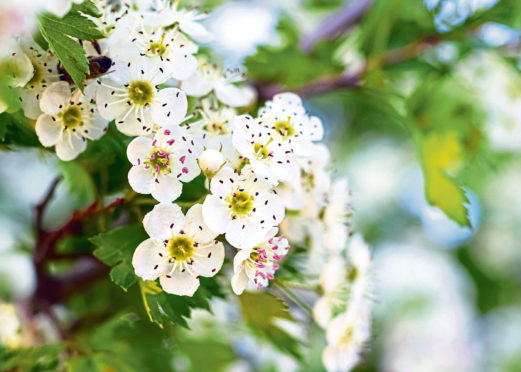The colour green comes in all kinds of different shades and tints, but none ventures close to the vibrancy of newly emerging hawthorn leaves, with their limey freshness glistening in the spring sunshine, a herald of new life and hope for the season ahead.
Such a tantalising verdant sea unfolded before my eyes at Lochore Meadows Country Park in Fife recently, with a track edge brimming thick with hawthorns.
These small, often bush-like, trees are fundamental pillars of our environment; the brilliant white flowers in May being a magnet for pollinating insects, and the wine-red haws in autumn and winter a vital source of food for fieldfares and blackbirds.
Hawthorn leaves provide sustenance for moth caterpillars, and the twisted, thorny branches offer welcome shelter for nesting birds.
It was hard to draw away from the hawthorns, but a short while later, I was on the shore of Lochore and out on the sun-dappled water a lone whooper swan glided. They are normally gregarious birds that hang around in groups, and I wondered whether this one was injured and had become stranded.
Lone whooper swan
I have encountered such occurrences before, including once on the River Forth near Flanders Moss, where a lone whooper spent the summer, isolated from its compatriots who had migrated north to their Icelandic nesting grounds.
A pair of lesser black-backed gulls caught my eye, resting on wooden posts by the shore edge. They are summer visitors, spending the winter off north-western Africa and south-western Europe. These birds, which are slightly smaller than herring gulls, have declined in recent years, possibly because discards from fishing boats have been phased out and more household rubbish is getting recycled, thus reducing feeding opportunities.
Near the end of my circuit, a calm, mirrored reedy lochan to the west of the main loch drew me into its placid embrace where large numbers of tufted duck bobbed. There were also a few wigeon, the drakes sporting a beauty of plumage few other birds can match; a wonderful pastel softness, with burnt-sienna heads, subtle lilac breasts and shimmering silvery bodies. Everything about the wigeon is gentle and benign.
Cackling quack
In among the tufted ducks and wigeon, I also spotted a pair of gadwalls, one of our scarcer duck species. Drake gadwalls are drab in comparison to the wigeon, the plumage being mostly grey with a black rear-end. The gadwall has an unusual call, sometimes described as a “cackling quack”.
By a field edge, a large group of greylag geese had congregated, grazing on the short-cropped grass. This species is one of the last species to migrate, resulting in the name greylag, as they lag behind other geese. Greylag geese were traditionally eaten at Michaelmas, and the fabled 19th Century cook, Mrs Beeton, recommended cooking them with port or wine, combined with mustard, salt, and pepper.
INFO
The amount of blossom varies greatly between individual hawthorns – some can be totally covered in white blooms in May, others only partially so. Hawthorn is also known as the May-tree or whitethorn.









